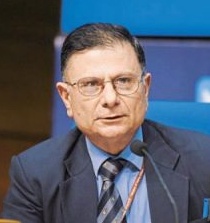Watal committee suggests payments regulator outside RBI
28 Dec 2016
 The Ratan Watal Committee set up by the government to recommend measures to promote digital payments has suggested making regulation of payments independent from the functions of central banking by either creating a new payments regulator or by making the current regulation by the board of payment and settlement systems (BPSS) within RBI more independent.
The Ratan Watal Committee set up by the government to recommend measures to promote digital payments has suggested making regulation of payments independent from the functions of central banking by either creating a new payments regulator or by making the current regulation by the board of payment and settlement systems (BPSS) within RBI more independent.
The committee is headed by Ratan Watal from the IAS cadre, who is currently a principle adviser at Niti Aayog.
The committee also suggested disincentives for consumers for making cash payments, including fines and penalties, in order to drive them towards digital transactions.
A nominal levy on high-value cash transactions, monthly, quarterly or yearly limitations on cash transactions are among the recommendations submitted to the finance ministry by the 11-member Committee on Digital Payments headed by NITI Aayog principal advisor Ratan Watal, as measures to discourage use of cash in the system.
''The committee recommends that cash transaction should be disincentivised by imposing nominal charges after a certain limit. Additionally, the committee suggests that consumer payments to government department / utilities can be a good starting point for such handling charges,'' the committee's report said.
The report, which was submitted to the finance ministry on 9 December, has now been released for public consultations.
On the other hand, to encourage people to use the tools for digital payments, the committee has suggested that all charges levied by government departments and utilities on digital payments be removed while bearing the cost of such transactions. It has also suggested that government departments and agencies be mandated to provide option to consumers to pay digitally.
The committee also noted that there should be incentives for consumers for making payments, including those for fines and penalties, to government using an electronic mode. This could be done by giving a discount or cashback and enable consumers to make payments (including taxes) to government through suitable digital means like cards and wallets, it said.
However, on the issue of merchant discount rate (MDR), which has been pegged to be a hindrance to incentivising credit and debit card payments, the committee noted in its report that reducing MDR would increase the disincentive to the business and have the opposite effect of slowing down the growth card payment ecosystem.
''The committee is of the view that a market driven MDR is an important element in the business of card infrastructure, including setting up and running the terminals. Capping the MDR reduces this incentive,'' according to the report.
''There is no evidence that the rationalisation has resulted in increase in POS (point-of-sale) infrastructure. Thus, the committee believes that there is no merit in further rationalisation,'' it added.
''Digital payments is to finance what invention of wheel was to transport. It offers an unprecedented opportunity to our people, most of whom live in rural India or are migrants in big cities. It promises access to formal financial services and benefits from e-commerce, specially for those who continue to be excluded. In addition to accelerating financial inclusion, opening new business models and markets – digital payments can improve the state's ability to curb tax leakages, funding of criminal activities and reduce cash related costs,'' the committee noted.
The committee said its vision is to set a roadmap for digital payments to grow substantially over the next three years from the current level of about five per cent of personal consumption and 24 per cent of all transactions.
India's cash to gross domestic product (GDP) ratio is among the highest in the world. Over the next three years, the committee expects to reduce this ratio from about 12 per cent to 6 per cent.
''Today, this is achievable as it is possible to build secure payment solutions suited to ordinary Indians which are as convenient as sending a message. About 65 per cent of population have active mobile telephony. Ninety-nine per cent have electronic identity in the form of Aadhaar. About 35 per cent have already adopted use of technology in the form of internet and social messaging – a ten-fold increase over ten years.''






























